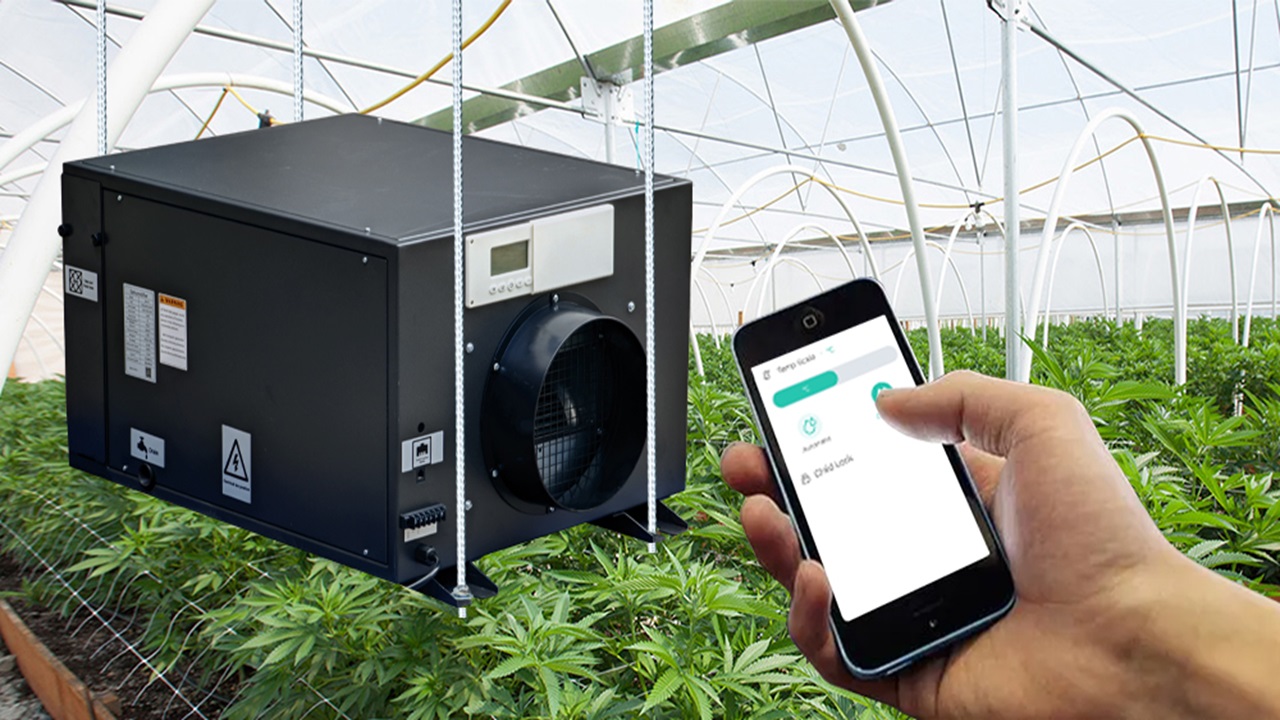Maintaining humidity within various locations is the most important characteristic that develops safe, cozy, and efficient environments. Higher humidities can develop conditions such as molding and cause structural damages in addition to those that affect performance well-being. Yakeclimate made major moves toward providing innovative humidity control solutions with their advanced technology desiccant dehumidifier technology. This article discusses how Yakeclimate's Desiccant Rotor Dehumidifier technology works, where it can be used, and how design and features make it smart for various settings.
How Yakeclimate’s Desiccant Technology Works
The only method of removing moisture from the air is desiccant dehumidification, which uses a special substance, usually silica gel, to absorb water from the air instead of through the cooling action that compresses moisture. It tends to be somewhat more effective at low temperatures or where humidity control requires precise accuracy. Designed for use with advanced materials and engineering, Yakeclimate dehumidifiers guarantee continuous moisture removal in difficult conditions. The moist air is drawn into such a unit through a wheel containing a rotating desiccant, where the desiccant absorbs the moisture. The moisture-laden desiccant is exposed to heat to release all its absorbed water, which is expelled outside. This cycle allows for continuous, efficient dehumidification.
Designed for Versatile Applications
An advantage of the desiccant dehumidifiers from Yakeclimate is that they are portable. It is equally relevant for agriculture to regulate the right humidity level in a place such as a greenhouse or planting room. Overmoisture can kill plants, promote mold, and cause enormous crop yield losses. Yakeclimate's dehumidifier maintains the humidity levels and provides a more stable environment that helps in healthy plant growth. For hospitality settings, including hotels and indoor pools, Yakeclimate’s technology offers a solution that enhances comfort and preserves facilities. Guests in humid rooms may experience discomfort, while high moisture levels can also damage walls, flooring, and other fixtures over time. In these settings, Yakeclimate’s dehumidifiers work discreetly and efficiently to maintain a pleasant environment, contributing to a better guest experience while protecting the property. Industrial facilities, where machinery and equipment need protection from corrosion and rust, also benefit from Yakeclimate’s dehumidification technology. By maintaining optimal moisture levels, Yakeclimate’s solutions help prevent moisture-related issues, reducing maintenance costs and extending equipment lifespansIn each of these applications, Yakeclimate’s desiccant dehumidifiers offer a cost-effective and efficient means of achieving safe and controlled environments.
Easy-to-Use Interfaces to Facilitate the Operation
Yakeclimate’s desiccant dehumidifiers are strong, compact, and easy to use for customers. Another important characteristic of these units is that they can have an automatic humidity control function. Smart sensors always monitor the amount of moisture in the air and switch it on or off as required. This implies that users will not struggle to operate the device because it regulates itself depending on the conditions prevailing at any one time. Another practical feature is the continuous drainage option. Yakeclimate’s dehumidifiers come with an external drainage hose, allowing them to run without interruption by draining water continuously. This feature is particularly useful in areas with consistently high humidity, where regular emptying of a water tank could be impractical. Additionally, the dehumidifiers are built with a water-full protection function, which automatically pauses if the drainage is interrupted or the tank reaches capacity.
Built for Durability and Efficiency
Reliability is always a consideration for any equipment used in industries, and Yakeclimate’s dehumidifiers are built to handle tough conditions. Made from corrosion and wear-resistant materials, these units do not rust or wear out when exposed to long-term moisture. This focus has the added benefit of making the dehumidifiers last long. Thus, the company is likely to sell fewer of these units because they do not conk out after a few months or years. Another factor that makes Yakeclimate’s desiccant technology efficient is the issue of efficiency. These dehumidifiers are designed to use less energy, resulting in energy usage running. Using a quality compressor, they can perform well while using less power, promoting energy-friendly operations. Such design outcomes not only enable businesses to cut expenses but also meet sustainable development goals by using minimal amounts of energy.
Conclusion
The desiccant dehumidifier technology of Yakeclimate is an efficient and reliable method for controlling humidity in various conditions. By applying desiccant-based moisture absorption, these units make these dehumidifiers functional even in low temperatures, making them a desirable substitute for standard refrigerator dehumidifiers. The applicability of the technology used by Yakeclimate is not limited to the mentioned spheres; it can be used in agriculture, the hotel industry, and various industrial enterprises where humidity control is crucial for comfort and stability. Incorporating features that are helpful to the users, including automatic monitoring, continuous drainage, and compactness, Yakeclimate has developed a product that addresses the real needs of those in business and the public. The durable construction and energy-efficient operation further highlight Yakeclimate’s commitment to quality and sustainability, making these desiccant dehumidifiers a worthwhile investment for those seeking effective humidity control. Whether it’s protecting plants in a greenhouse, ensuring comfort in a hotel, or preserving machinery in a factory, Yakeclimate’s desiccant dehumidifiers offer an advanced approach to creating stable, controlled environments.


